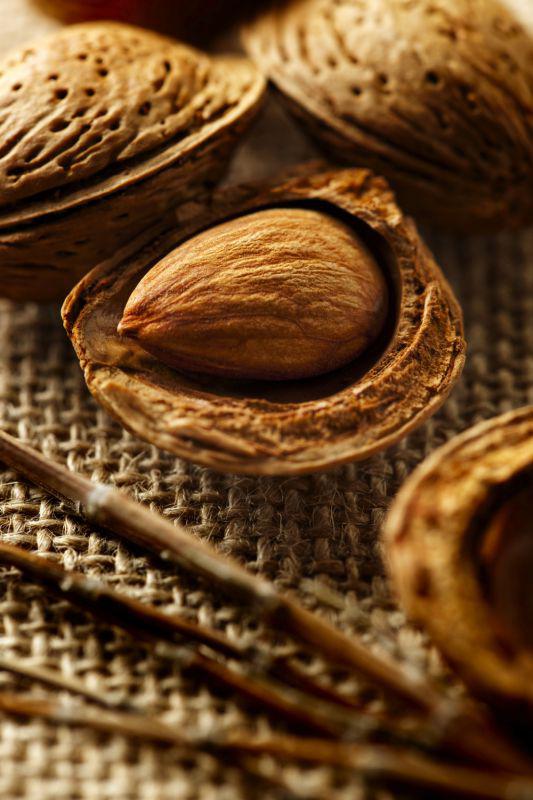Allergies
Common allergies in children include cow's milk protein, egg whites, wheat, soya beans, codfish and peanuts. In adults, nuts and seafood are the most common allergens. Contact your GP to discuss any suspected food allergies or intolerances, as incorrect diagnosis can lead to malnutrition, and there is support available. For example many coeliacs can get appropriate food by free prescription and many allergies can be treated with medication.
Immediate reactions include generalised rashes, itching, diarrhoea, vomiting, swelling of the lips and soft tissues, breathing difficulties and even shock. For example in peanut anaphylaxis, rapid swelling can occur from the release of histamine.
Allergies can be extremely uncomfortable and occasionally life threatening so it is very important to avoid all traces of the allergen. Whilst products labelled vegan are fine for people allergic to animal products, they may well contain nuts. An allergy to nuts is one of the most complex to to shop for as the vast majority of manufacturers will not have nut free status. Avoiding whole nuts is relatively easy. What is more difficult is avoiding nuts in processed foods. Nuts are not always obviously listed on ingredient labels. For example, peanut can be listed as groundnut, earth nut, monkey nut, mixed nuts, peanut butter, peanut oil, arachis oil, and groundnut oil.
New rules established a list of 12 food allergens that must be listed whenever they, or ingredients made from them, are used at any level in pre-packed foods including alcoholic drinks. These foods are gluten, crustaceans, eggs, fish, peanuts, nuts, soybeans, milk, celery, mustard, sesame and sulphur dioxide. If you are in any doubt and wish to know more about the ingredients, do ask a memeber of the Real Foods staff and we will look into it. Many of our suppliers have already taken steps to have transparent ingredients and processing information, some are actively pursuing free-from foods. E.g Hale and Hearty's Gluten Free range or Orgran's No Egg Egg Replacer

Intolerances - a few of the likely culprits
Non allergic histamine release. The signs are very similar to an allergy and include headache, swelling, urticaria, vomiting and diarrhoea. A substance called histamine is released (it is also released in true allergic reactions) in response to foods such as shellfish or strawberries.
Metabolic defisinecy. A lack or deficiency of enzymes responsible for the digestion of food can cause many types of food intolerance. For example, a deficiency in lactase, the enzyme responsible for digesting milk, causes intolerance to milk.
Coeliac disease is a gut intolerance to a protein found in wheat, called gluten, it is sometimes considered an allergy but medically speaking it is intolerance to wheat and often has a delayed reaction. The symptoms of coeliac disease are controlled by following a gluten-free diet. It is unknown exactly why or how gluten harms the gut, although it is now thought to be an abnormal immunological response rather than an enzyme deficiency. Pharmacological effects
Some food substances can act like drugs, particularly if taken in large quantities. The most familiar of these substances is caffeine, found in tea, coffee, chocolate and cola drinks. A large intake of caffeine can cause tremor, migraine and palpitations. Other pharmacologically active substances found in food include histamine, tyramine, tryptamine and serotonin, which may be consumed in foods such as red wine, cheese, yeast extract, avocados and bananas. In susceptible people, these foods can trigger urticaria, facial flushing and headaches.
Reactions can be provoked by many foods and food products which we cannot be clear about. They may or may not be allergic reactions. Food additives, particularly tartrazine and sodium benzoate, can provoke urticaria, rhinitis and asthma. Yeasts can provoke a number of reactions in some people, particularly skin disorders.
Whilst not all food intolerances are related to meat and dairy products, it can be seen that vegetarians, and particularly vegans, will suffer less from food intolerance because they already eliminate some of the most common causes of intolerance.
Treatment
Sometimes the cause of a particular food intolerance is obvious, by the immediate effect that occurs on eating a particular food. In this case the treatment is simply to avoid that particular food. In many cases the suspected food is more difficult to track down. A diary kept of foods eaten and symptoms experienced can sometimes help detect the offending food or foods. Other factors such as the weather, menstrual cycles and difficult relationships can affect the symptoms. Sometimes simple exclusion diets are advised where record keeping suggests a particular food may be the cause. So, for example, milk, egg or wheat may be avoided to see if symptoms improve. Follow this link to see our health advice notes on diets (including corn-free, low purine (for people with gout) and gluten free diets).
Other more restrictive diets may be advised, which only include a limited amount of foods which rarely cause a reaction. These diets are usually called exclusion diets. The idea of an exclusion diet is to identify an allergy or intolerance, by limiting the food to a very small choice, checking for symptoms and then very gradually introducing test foods to see if there is a reaction. You are strongly advised to see a professional if you are considering an exclusion, for example a nutritionist. Here is a link to our health notes on exclusion diets.
Recipes for all
When cooking for people with allergies and/or intolerances, the simplest thing to do is ask. They will usually know their triggers. If they have a severe allergy, you will need to keep your entire environment free from the allergen, but often an intolerance can be easily and tastily worked around! Here are a few to try...
Lemon Sultana cake is Free from: wheat and nuts; can be dairy, egg and soya free; no added sugar
Jenny's Nutty Banana Bread Made with coconut flour, wheat and gluten free.
Honey Roast Vegetable Salad - Free from nuts, dairy and eggs
Or browse yourself - here's a link to the recipes